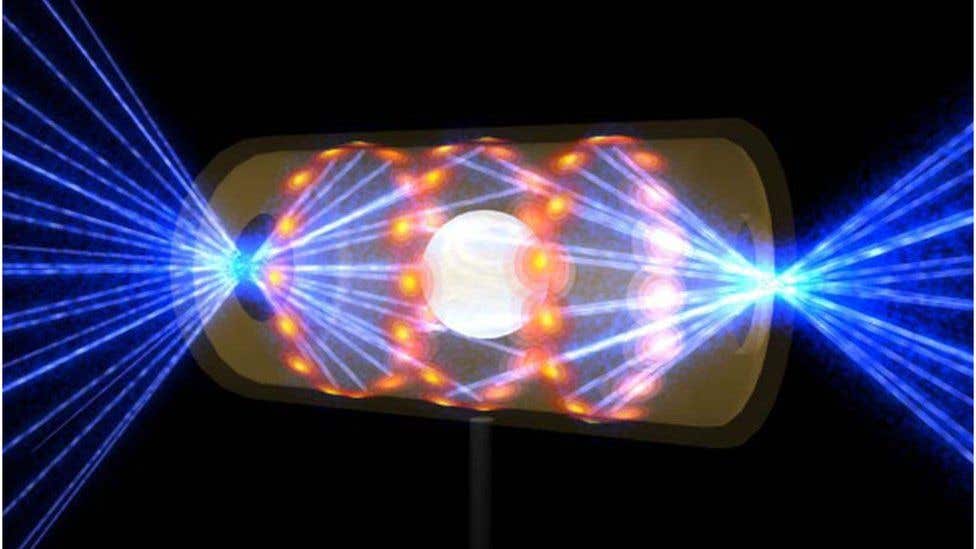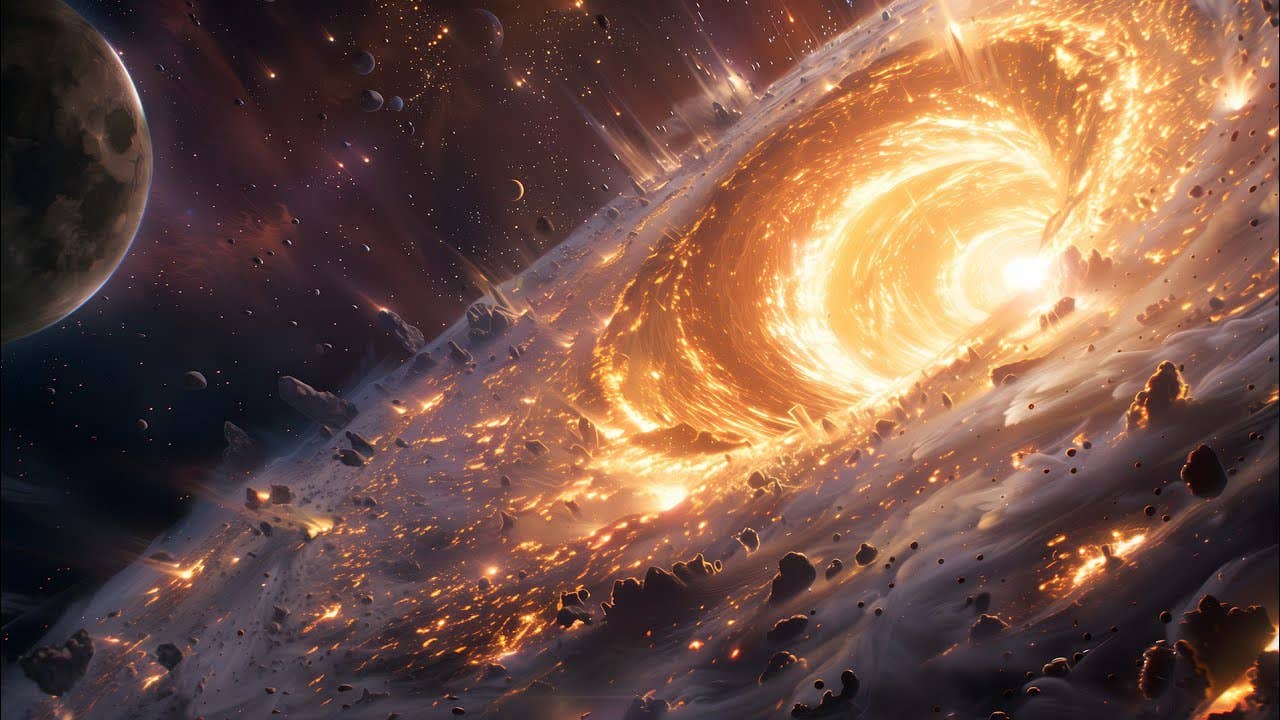Major nuclear fusion first achieved as ‘ignition’ triggered in a lab
Ignition is a key process that amplifies the energy output from nuclear fusion and could provide clean energy and answer physics questions

[August 18, 2021: Imperial College London]
Ignition is a key process that amplifies the energy output from nuclear fusion and could provide clean energy and answer some huge physics questions.
A new experiment appears to have triggered ignition for the first time, at the National Ignition Facility (NIF) at Lawrence Livermore National Laboratory in the US, recreating the extreme temperatures and pressures found at the heart of the Sun.
This has produced more energy than any previous inertial confinement fusion experiment, and proves ignition is possible, paving the way for reactions that produce more energy than they need to get started.
Imperial College London physicists are already helping to analyze the data from the successful experiment, which was conducted on 8 August 2021. Imperial has also produced more than 30 Ph.D. students that have gone on to work at the NIF. The College retains strong links with the facility, and others throughout the world, through the Center for Inertial Fusion Studies (CIFS).
Momentous step forward
Co-director of the Center for Inertial Fusion Studies at Imperial, Professor Jeremy Chittenden, said that "demonstration of ignition has been a major scientific grand challenge since the idea was first published almost 50 years ago. It was the principal reason for the construction of NIF and has been its primary objective for over a decade."
"After ten years of steady progress towards demonstrating ignition, the results of experiments over the last year have been more spectacular, as small improvements in the fusion energy output are strongly amplified by the ignition process. The pace of improvement in energy output has been rapid, suggesting we may soon reach more energy milestones, such as exceeding the energy input from the lasers used to kick-start the process."
"This is crucial for opening up the promise of fusion energy and allowing physicists to probe the conditions in some of the most extreme states in the Universe, including those just minutes after the Big Bang. Controlled fusion in the laboratory is one of the defining scientific grand challenges of this era and this is a momentous step forward."
Co-director of the Center for Inertial Fusion Studies at Imperial, Professor Steven Rose, said that "the NIF team have done an extraordinary job. This is the most significant advance in inertial fusion since its beginning in 1972."
"What has been achieved has completely altered the fusion landscape and we can now look forward to using ignited plasmas for both scientific discovery and energy production."
Reaching ignition
The type of nuclear reaction that fuels current power stations is fission—the splitting of atoms to release energy. Fusion instead forces atoms of hydrogen together to gain energy, producing a large amount of energy, and, crucially, limited radioactive waste.
For this reason, a way to create efficient fusion reactions has been sought for decades to produce clean energy using few resources. However, fusion reactions have proven difficult to control and to date, no fusion experiment has produced more energy than has been put in to get the reaction going.
While the latest experiment still required more energy in than it got out, it is the first to reach the crucial stage of 'ignition', which allowed considerably more energy to be produced than ever before, and paves the way for 'break even', where the energy in is matched by the energy out.
There are two main ways researchers worldwide are currently trying to produce fusion energy. The NIF focuses on inertial confinement fusion, which uses a system of lasers to heat up fuel pellets producing a plasma—a cloud of charged ions.
The fuel pellets contain 'heavy' versions of hydrogen—deuterium and tritium—that are easier to fuse and produce more energy. However, the fuel pellets need to be heated and pressurized to conditions found at the center of the Sun, which is a natural fusion reactor.
Once these conditions are achieved, fusion reactions release several particles, including 'alpha' particles, which interact with the surrounding plasma and heat it up further. The heated plasma then releases more alpha particles and so on, in a self-sustaining reaction—a process referred to as ignition.
However, this process has never been fully realized before—until now. The results from the experiment on 8 August indicate an energy output of over one mega-joule, which marks the threshold agreed for the onset of 'ignition' and is six times the previous highest energy achieved.
Arthur Turrell, from the Department of Physics at Imperial, and author of the newly published book The Star Builders: Nuclear Fusion and the Race to Power the Planet, said that "This phenomenal breakthrough brings us tantalizingly close to a demonstration of 'net energy gain' from fusion reactions—just when the planet needs it."
"The team at the National Ignition Facility, and their partners around the world, deserve every plaudit for overcoming some of the most fearsome scientific and engineering challenges that humanity has ever taken on. The extraordinary energy release achieved will embolden nuclear fusion efforts the world over, lending momentum to a trend that was already well underway."
Uncharted territory
Professor Chittenden said that "while the NIF is primarily a physics experiment, and does not have the main goal of creating fusion energy, this incredible result means that this dream is closer to being a reality. We have now proven it is possible to reach ignition, giving inspiration to other laboratories and start-ups around the world working on fusion energy production to try to realize the same conditions using a simpler, more robust and above all cheaper method."
The Imperial team are now analyzing the outputs of the experiment, using diagnostic methods they have created to understand what is happening in such extreme conditions. Dr. Brian Appelbe, Research Associate in the Center for Inertial Fusion Studies at Imperial, said that "the NIF lasers already created the most extreme conditions on Earth, but the new experiment appears to have doubled the previous temperature achieved. We have entered a regime we've previously never been in—this is uncharted territory in our understanding of plasma."
Dr. Aidan Crilly, Research Associate in the Center for Inertial Fusion Studies at Imperial, added that "reproducing the conditions at the center of the Sun will allow us to study states of matter we've never been able to create in the lab before, including those found in stars and supernovae."
"We could also gain insights into quantum states of matter and even conditions closer and closer to the beginning of the Big Bang—the hotter we get, the closer we get to the very first state of the Universe."
Like these kind of feel good stories? Get the Brighter Side of News' newsletter.
Tags: #New_Innovations, #Green_Good_News, #Nuclear_Energy, #Fusion, #World_First, #The_Brighter_Side_of_News
Joseph Shavit
Head Science News Writer | Communicating Innovation & Discovery
Based in Los Angeles, Joseph Shavit is an accomplished science journalist, head science news writer and co-founder at The Brighter Side of News, where he translates cutting-edge discoveries into compelling stories for a broad audience. With a strong background spanning science, business, product management, media leadership, and entrepreneurship, Joseph brings a unique perspective to science communication. His expertise allows him to uncover the intersection of technological advancements and market potential, shedding light on how groundbreaking research evolves into transformative products and industries.



